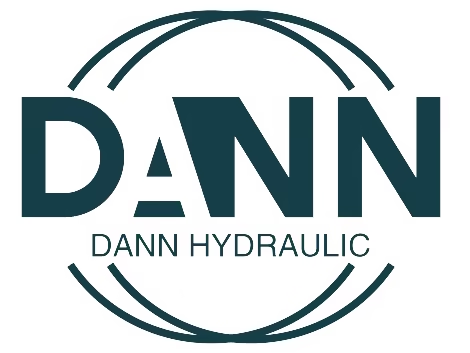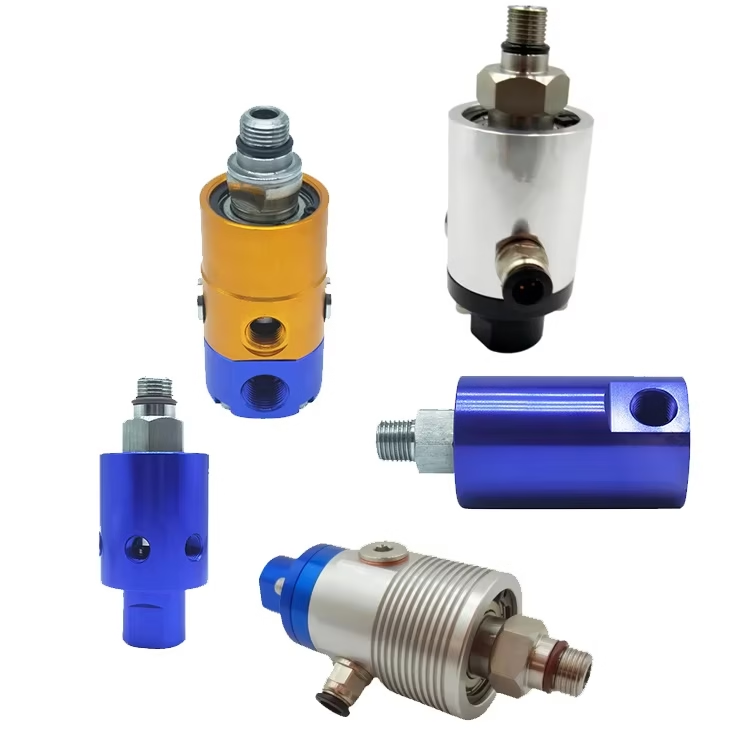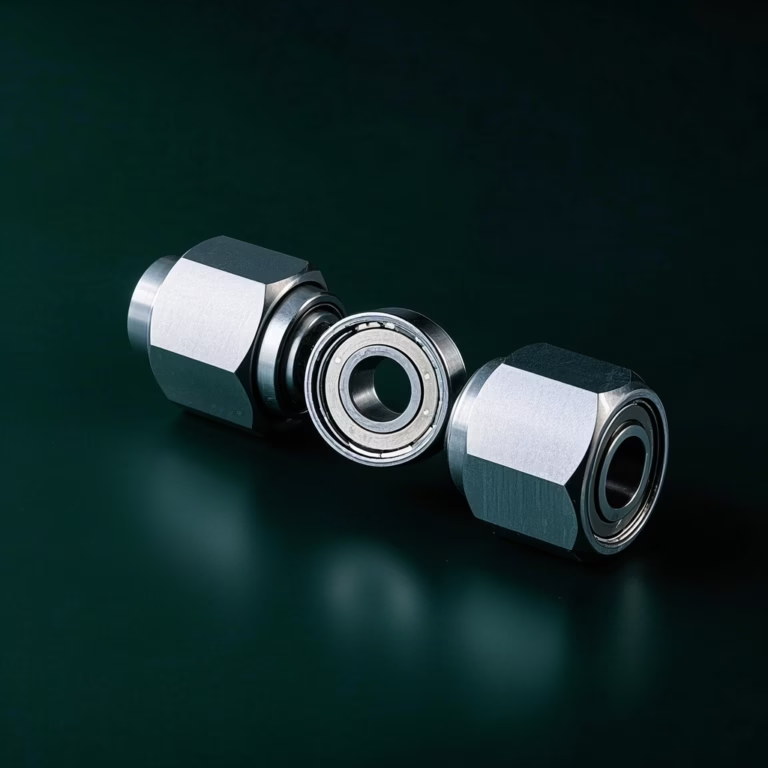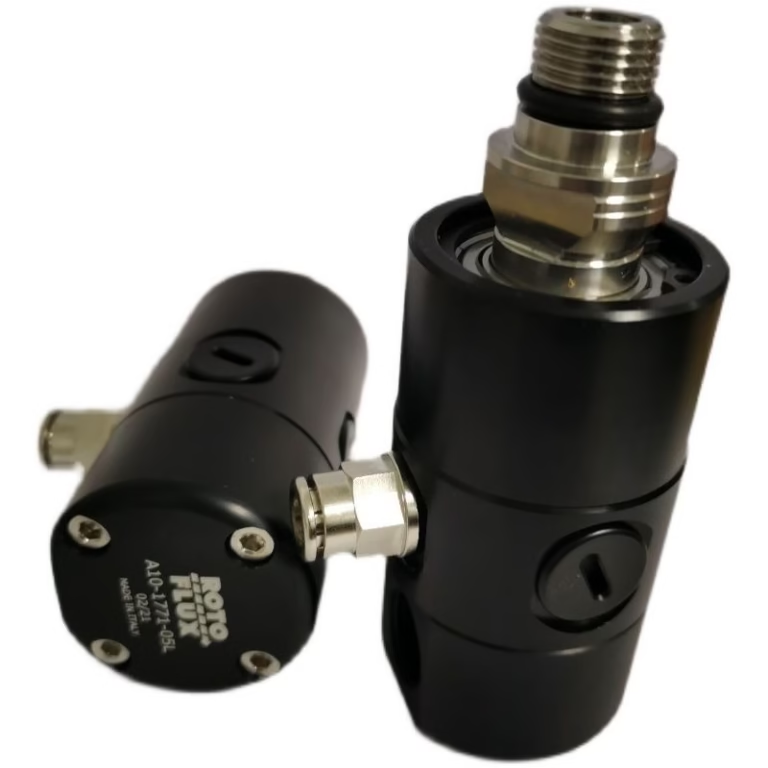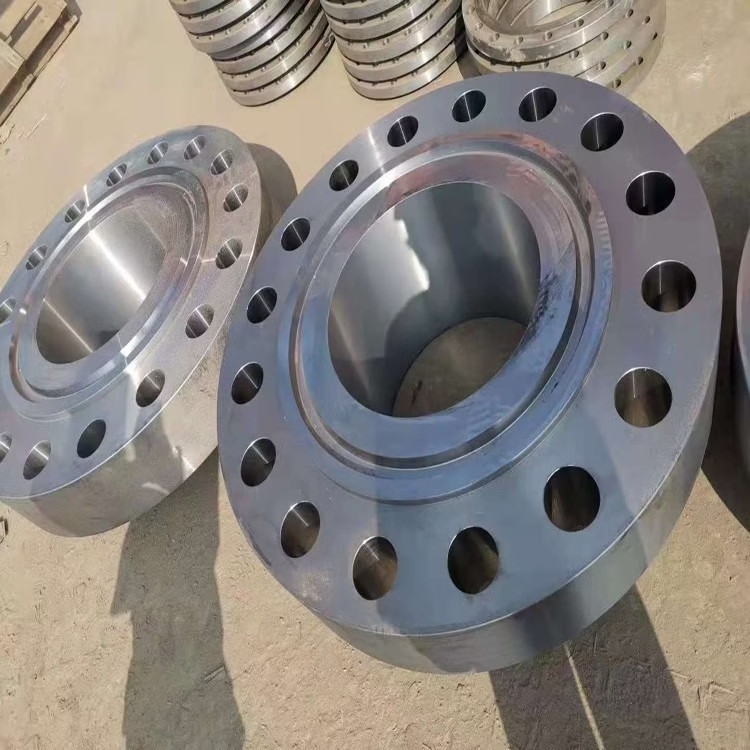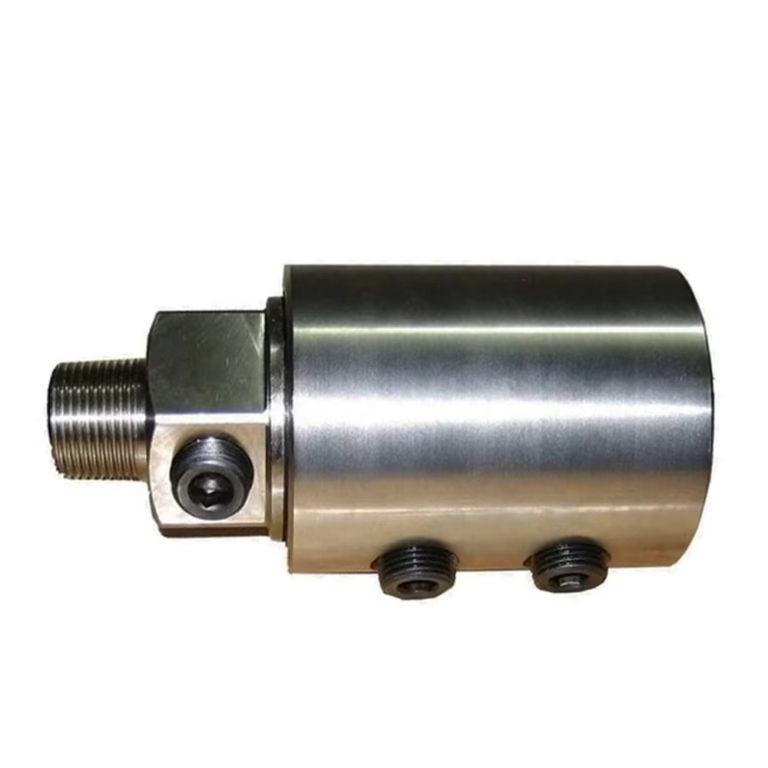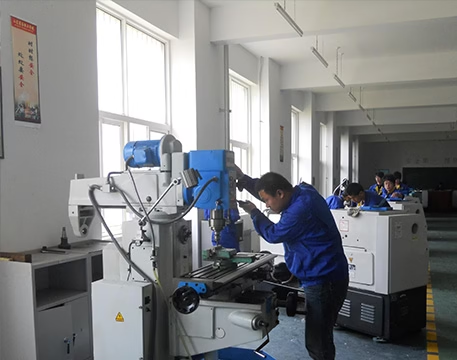What is Dedicated Rotary Joint Part?
Introduction
In the intricate web of industrial operations. The seamless transfer of fluids, gases, and power between stationary and rotating components is the linchpin of efficient machinery performance. Dedicated rotary joints, engineered to meet the specific demands of various industrial equipment. Play a pivotal role in ensuring smooth and reliable operations. This blog delves deep into six specialized rotary joints: the Dedicated Right – Angle Swivel Joint for Hose Reel, the Dedicated Rotary Joint for Log Grabber, the Dedicated Rotary Joint Vacuum Drier, the Dedicated Rotary Joint for Punch Press & Shear Machine, the Dedicated Rotary Joint for the Rubber Internal Mixer, and Steel Mill – Dedicated Rotary Joint. We’ll explore their unique features, applications, and advantages, and how to choose and maintain them for optimal performance.
Dedicated Right-Angle Swivel Joint for Hose Reel: Precision and Flexibility in Fluid Transfer
Hose reels are essential in a wide range of industries, from firefighting and construction to agriculture and industrial cleaning. The Dedicated Right-Angle Swivel Joint for Hose Reel is designed to facilitate the smooth and leak-free transfer of fluids. Such as water, oil, or chemicals, while allowing the hose reel to rotate freely.
How It Works
This swivel joint features a right-angle configuration that enables a compact and efficient connection between the stationary fluid supply line and the rotating hose reel. The joint consists of a stationary housing and a rotating element. High-quality seals, often made from materials like nitrile rubber or fluorocarbon elastomers, create a tight seal to prevent fluid leakage. The rotating element is supported by precision-engineered bearings, ensuring smooth rotation even under heavy loads or high-pressure conditions.
For example, in a construction site. A hose reel equipped with this dedicated swivel joint can supply water for concrete mixing. As the hose reel winds and unwinds, the swivel joint allows for continuous fluid flow without any kinks or leaks. The right-angle design also saves space, making it easier to integrate the hose reel into the machinery layout.
Key Features
Compact Design:
The right-angle shape of the joint minimizes the overall footprint. Making it ideal for applications where space is at a premium. This allows for more efficient use of the available area on the hose reel and in the surrounding equipment.
High-Pressure Resistance:
It can withstand significant fluid pressures, ensuring reliable operation in demanding environments. Whether it’s high-pressure water jetting in industrial cleaning or hydraulic fluid transfer in heavy machinery. This swivel joint can handle the load.
Versatile Fluid Compatibility:
Capable of handling a variety of fluids. From water and oil to aggressive chemicals, the joint is suitable for numerous industrial applications. The choice of seal materials can be customized based on the specific fluid being transferred to ensure compatibility and prevent chemical degradation.
Dedicated Rotary Joint for Log Grabber: Robustness for Heavy-Duty Forestry Operations
Log grabbers are crucial equipment in the forestry industry, used to handle and transport logs efficiently. The Dedicated Rotary Joint for Log Grabber is built to endure the harsh conditions and heavy loads associated with log handling. Ensuring smooth operation and reliable fluid transfer for the grabber’s hydraulic system.
Construction and Function
This rotary joint is constructed with heavy-duty materials. Such as high-strength alloy steel, to withstand the mechanical stresses and impacts during log handling. Inside, a complex arrangement of seals and bearings works in tandem to maintain a leak-free connection while the log grabber rotates. The seals are designed to resist wear from dirt, debris, and moisture commonly found in forestry environments. While the bearings support the heavy weight of the log grabber and its load.
During log-loading operations, for instance, the rotary joint enables the hydraulic fluid to flow freely between the stationary hydraulic pump and the rotating arms of the log grabber. This allows the grabber to open, close, and maneuver the logs precisely, even in rough terrain or adverse weather conditions.
Distinctive Advantages
Extreme Durability:
Engineered to withstand the rigors of forestry work. The joint can endure continuous exposure to heavy loads, vibrations, and harsh environmental elements. This durability reduces the frequency of replacements and maintenance, saving both time and money for forestry operations.
High-Load Capacity:
It has a substantial load-bearing capacity, capable of supporting the weight of large logs and the mechanical forces generated during the grabbing and transporting processes. This ensures stable and reliable operation of the log grabber, enhancing productivity in the forestry industry.
Environmental Resistance:
The joint’s seals and materials are resistant to moisture, dirt, and UV radiation, preventing premature wear and degradation. This makes it suitable for long-term use in outdoor forestry applications without compromising performance.
Dedicated Rotary Joint for Vacuum Drier: Precision in Vacuum-Sealed Environments
Vacuum driers are widely used in industries such as pharmaceuticals, food processing, and chemical manufacturing to remove moisture from products under vacuum conditions. The Dedicated Rotary Joint for Vacuum Drier is designed to maintain a perfect vacuum seal while allowing the rotation of the drying chamber, ensuring efficient drying processes.
Operation in Vacuum Conditions
This rotary joint features advanced sealing technology to prevent any air leakage into the vacuum-sealed drying chamber. Specialized materials, such as vacuum-rated elastomers and metal bellows, create a hermetic seal that can withstand a low-pressure environment. The joint also allows for smooth rotation of the drying chamber, enabling uniform drying of the products inside.
In a pharmaceutical vacuum drier. For example, the rotary joint ensures that the drying chamber remains under vacuum as it rotates. This allows for the efficient removal of moisture from pharmaceutical powders, ensuring product quality and stability. The precise control of the vacuum and rotation provided by the joint is essential for meeting the strict quality standards in the pharmaceutical industry.
Key Attributes
Vacuum-Tight Sealing:
The joint’s ability to maintain an airtight seal under vacuum conditions is its primary advantage. This ensures that the drying process occurs efficiently. Without any interference from external air, which could affect the quality of the dried products.
High-Temperature Resistance:
Many vacuum drying processes involve elevated temperatures. The rotary joint is designed to withstand these high temperatures. Ensuring that it does not degrade or lose its sealing integrity during operation.
Precision Rotation:
Smooth and precise rotation of the drying chamber is crucial for uniform drying. The rotary joint’s bearing system and design ensure that the chamber rotates without any wobbling or unevenness, resulting in consistent drying results.
Dedicated Rotary Joint for Punch Press & Shear Machine: Reliability for Metalworking Operations
Punch presses and shear machines are essential in metalworking industries for cutting, shaping, and forming metal sheets and parts. The Dedicated Rotary Joint for Punch Press & Shear Machine is engineered to handle the high-speed rotations, heavy loads, and precise fluid control required in these demanding applications.
Role in Metalworking
In punch presses and shear machines, the rotary joint facilitates the transfer of hydraulic or pneumatic fluid to the moving parts of the machines. It ensures that the fluid is delivered smoothly and accurately, enabling the machines to perform their cutting and shaping operations with precision. The joint must be able to withstand the high-speed rotations of the machine’s components, as well as the heavy forces generated during metalworking processes.
For example, in a punch press used to create holes in metal sheets, the rotary joint supplies hydraulic fluid to the punch mechanism. The precise control of the fluid flow provided by the joint allows for accurate punching, ensuring that the holes are of the correct size and shape. In shear machines, the rotary joint enables the smooth operation of the cutting blades, ensuring clean and precise cuts.
Special Features
High-Speed Performance:
Capable of operating at high rotational speeds, the joint can keep up with the fast-paced operations of punch presses and shear machines. This ensures that the machines can achieve high productivity without sacrificing precision.
Heavy-Load Handling:
It is designed to withstand the heavy loads and forces generated during metalworking. The robust construction and high-strength materials used in the joint ensure its durability and reliability, even under continuous and intense use.
Precise Fluid Control:
The joint’s design allows for accurate control of the fluid flow, which is essential for the precise operation of punch presses and shear machines. This precision ensures that the metalworking processes are consistent and of high quality.
Dedicated Rotary Joint for Rubber Internal Mixer: Resilience for High-Intensity Rubber Processing
Rubber internal mixers are used to blend and mix rubber compounds with various additives to create materials suitable for different rubber products. The Dedicated Rotary Joint for Rubber Internal Mixer must endure high temperatures, high pressures, and abrasive materials during the mixing process to ensure efficient and reliable operation.
Function in Rubber Mixing
This rotary joint is designed to transfer heat-conducting fluids, such as steam or thermal oil, to the mixing chamber of the rubber internal mixer. It also allows for the rotation of the mixing rotors, ensuring thorough mixing of the rubber compounds. The joint’s seals and materials are chosen to resist the harsh chemicals and abrasion caused by the rubber compounds and additives.
During the rubber mixing process, for instance, the rotary joint supplies steam to heat the mixing chamber, softening the rubber and facilitating the blending of additives. As the mixing rotors rotate, the joint ensures a continuous and leak-free flow of the heat-conducting fluid, maintaining the optimal temperature for the mixing process.
Key Performance Features
High-Temperature and Pressure Resistance:
The joint can withstand the elevated temperatures and pressures inside the rubber internal mixer, ensuring that it remains functional and leak-free throughout the mixing process. This is crucial for maintaining the quality and consistency of the rubber compounds.
Abrasion Resistance:
The materials used in the joint are highly resistant to abrasion from the rubber compounds and additives. This extends the lifespan of the joint, reducing maintenance costs and downtime for the rubber mixing operations.
Chemical Compatibility:
It is compatible with the various chemicals and additives used in rubber mixing, preventing any chemical reactions that could damage the joint or affect the quality of the rubber compounds.
Steel Mill – Dedicated Rotary Joint: Endurance in Harsh Steel-Making Environments
Steel mills are characterized by extreme operating conditions, including high temperatures, heavy loads, and exposure to corrosive substances. The Steel Mill – Dedicated Rotary Joint is built to withstand these harsh conditions, enabling the smooth operation of various equipment in the steel-making process, such as continuous casters and rolling mills.
Adaptation to Steel-Mill Conditions
This rotary joint is constructed from high-temperature-resistant materials, such as refractory metals and ceramics, to endure the intense heat in steel mills. Its seals are designed to resist corrosion from molten steel slag and other corrosive by-products. The joint also has a high-load-bearing capacity to support the heavy machinery in steel mills, ensuring stable rotation and fluid transfer.
In a continuous caster, for example, the rotary joint transfers cooling water to the mold, which is crucial for solidifying the molten steel. Despite the high temperatures and harsh environment, the joint maintains its integrity, ensuring the efficient operation of the continuous casting process.
Distinguishing Advantages
Extreme Heat Resistance:
Capable of withstanding temperatures well above 1000°C, the joint can operate reliably in the high-temperature zones of steel mills. This heat resistance is essential for maintaining the functionality of the equipment and ensuring the quality of the steel production.
Corrosion and Wear Resistance:
The joint’s materials and seals are highly resistant to corrosion and wear from the aggressive substances present in steel mills. This durability reduces the need for frequent replacements and maintenance, minimizing production disruptions.
High-Load and Vibration Tolerance:
It can handle the heavy loads and vibrations associated with steel-making equipment, providing stable and reliable performance. This is crucial for the continuous and efficient operation of steel mills, which require high productivity levels.
Choosing the Right Dedicated Rotary Joint: A Comprehensive Guide
Selecting the appropriate dedicated rotary joint for your industrial equipment is a critical decision that can significantly impact the performance, reliability, and cost-effectiveness of your operations. Here are some key factors to consider:
Operating Conditions:
Thoroughly analyze the temperature, pressure, speed, and environmental factors of your equipment’s operating environment. For example, if your equipment operates in a high-temperature and corrosive environment like a steel mill, choose a rotary joint with high-temperature and corrosion-resistant materials.
Fluid or Gas Characteristics:
Consider the type, viscosity, and chemical properties of the fluid or gas being transferred. Select a rotary joint with seals and materials that are compatible with the specific fluid to prevent leakage and chemical reactions.
Load Requirements:
Evaluate the mechanical loads, such as weight and force, that the rotary joint will need to support. Ensure that the joint has a sufficient load-bearing capacity to handle the demands of your equipment.
Precision and Performance Requirements:
If your application requires precise fluid control or smooth rotation, look for rotary joints with advanced designs and high-quality components, such as precision-engineered bearings and seals.
Maintenance Tips for Prolonging the Life of Dedicated Rotary Joints
Proper maintenance is essential for ensuring the long-term performance and reliability of dedicated rotary joints. Here are some maintenance tips to keep in mind:
Regular Inspections:
Conduct routine visual inspections of the rotary joint for signs of leakage, wear, or damage. Check the seals, bearings, and connections for any abnormalities. Early detection of issues can prevent more significant problems and costly repairs.
Lubrication:
Follow the manufacturer’s recommendations for lubricating the rotary joint. Proper lubrication reduces friction, wear, and heat generation, extending the lifespan of the joint. Use the recommended lubricant and lubrication intervals for optimal performance.
Cleaning:
Keep the rotary joint clean and free from dirt, debris, and contaminants. In dirty environments, more frequent cleaning may be required to prevent these substances from causing damage to the seals and bearings.
Seal Replacement:
Replace the seals at the recommended intervals or as soon as signs of wear or leakage are detected. Using high-quality replacement seals is crucial for maintaining the integrity and performance of the rotary joint.
Conclusion
Dedicated rotary joints are indispensable components in modern industrial operations, each tailored to meet the specific needs of different equipment and industries. Whether it’s the flexibility of the Dedicated Right – Angle Swivel Joint for the Hose Reel, the robustness of the Dedicated Rotary Joint for Log Grabber, the precision of the Dedicated Rotary Joint for Vacuum Drier, the reliability of the Dedicated Rotary Joint for Punch Press & Shear Machine, the resilience of the Dedicated Rotary Joint for Rubber Internal Mixer, or the endurance of the Steel Mill – Dedicated Rotary Joint, understanding their features, applications, and maintenance requirements is key to optimizing industrial processes.
By choosing the right rotary joint and implementing a proper maintenance strategy, industries can enhance productivity, reduce downtime, and achieve long-term success in their operations.
